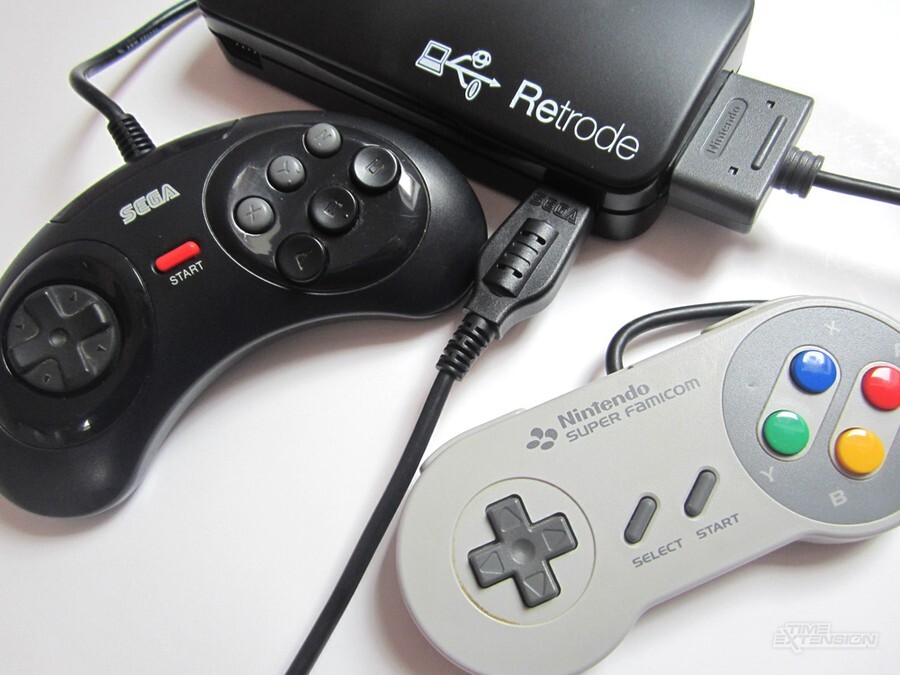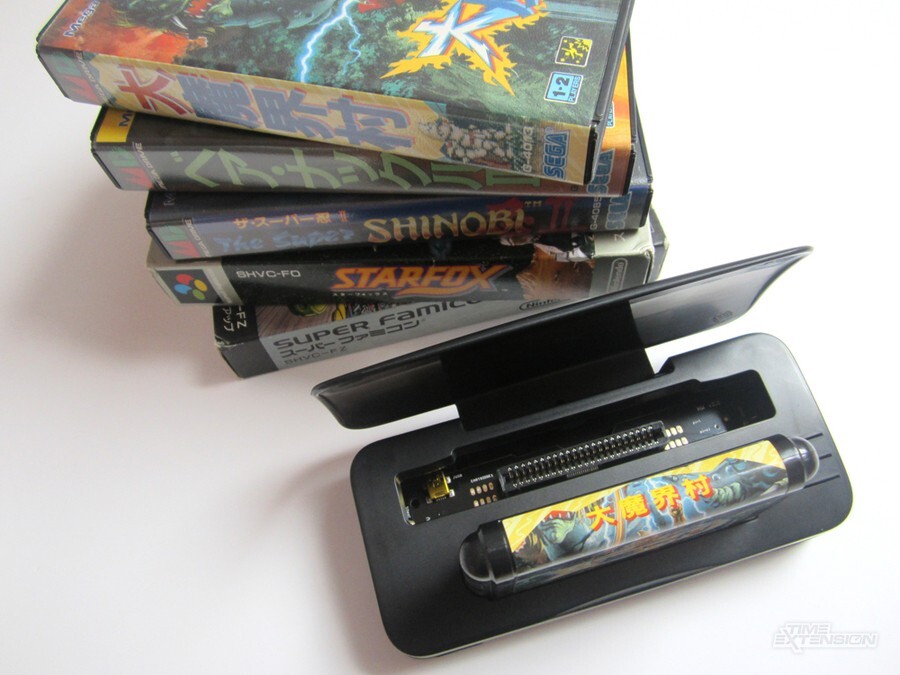
We reported on the Retrode Version 2 last year, and have since been able to get our hands on one of these intriguing (not to mention controversial) devices. What follows is a straightforward review of the unit and an assessment of its functionality and usefulness to dedicated retro collectors. We're not going to get bogged down in a debate about piracy here; while the Retrode 2 does technically permit you to make backups of your SNES and Mega Drive / Genesis cartridges, it also allows you to run the games in an emulator directly from the cart, and is being marketed by its manufacturer as a means of preserving software, not illegally distributing it.
To quote the sales page on Stone Age Gamer:
The Retrode is not for you if you don’t see the difference between making private backup copies of games that you own, and downloading 10,000 ROMs from the internet.
The Retrode 2 is designed to be portable and compact, and comes with a flip-down lid to cover the cartridge ports when it isn't being used. It's powered by a USB cable, which also provides the connection between the device and your PC. Four joystick ports are included - two for the SNES and two for the Mega Drive - but when in use, you can actually use SNES pads in Mega Drive games, and vice versa.
The Retrode 2 doesn't come with any software, but is auto-detected as a storage device when connected to your computer. You'll have to source the emulators yourself, and simply point them to the Retrode 2 when you come to boot up a game. In a neat touch, it's possible to backup save data from your original cartridges, as well as write the data in the opposite direction. This could potentially be very useful if you have carts with internal batteries that are about to die - you could backup the data, replace the battery inside the cartridge and then restore your progress to the refurbished game.

One of the biggest bonuses you get from playing your 16-bit software via emulation is improved visuals - many emulators allow you to tidy up the image, adding features such as authentic-looking CRT scan-lines and other filters. You can also record your performances and take screenshots during play - something that is difficult to achieve when running games on native hardware, unless you have expensive screen capture equipment.

The Retrode 2 does have some limitations - it wouldn't run our copy of Pier Solar and can't play Game Boy games using the Super Game Boy peripheral - but on the whole, it's pretty robust. The biggest caveat is the price - at $89.99, you're going to have to dig pretty deep to afford one of these. Even so, we were pleasantly surprised at how much use we got out of this device; it allows you to enjoy your library of classic software without having to dig out your old consoles from the attic, and furthermore, it presents the games in crystal-clear definition and allows you to use mid-game save states - a boon for mature gamers who no longer have the spare time required to rinse a game in a single day.
Thanks to Stone Age Gamer for supplying the unit used in this review.
This article was originally published by nintendolife.com on Wed 23rd January, 2013.






Comments 16
Is there any way to connect it to a tv?
@chiptoon You could connect your PC to your TV via VGA.
Have you tried Master System games via the adapter? Is there a way for Retrode 2 to play NES games?
@belmont Here's the list of adapters they currently have:
http://www.retrode.org/plug-in-adapters/
@Damo Thanks!! That's quite a lot!
Interesting. If it wasn't for the Virtual Console I'd definitely pick this up.
This could potentially be an extremely useful device for owners of rare prototypes. Does anybody know if this adapter can rip SA-1 games?
I still wish they'd create one that works with Atari and NES bank switching schemes.
So this is not a console perse that can play Megadrive and SNES games but an adaptor that lets you play these games via a PC. Sorry I am confused what this device actually is and does.
@luminalace It lets you play original SNES and MD carts on your PC via emulation.
I just picked up the Tomee SNES USB controller. It is good enough IMO. Works well with my MacBook Pro. It was only $20, too. I believe they make a Mega Drive controller as well. Just a more affordable option
@Boo_Buster Affordable it may be, but you're not using your original carts, are you?
Wow going to have to look into this. I have a bunch of NES, SNES and Genesis cartridges that I like to play but I have to admit dragging out the systems and than hooking them up to the tv can be a pain just to play them for an hour or so. This options sounds a whole lot easier.
My apologies for the double post but I was wondering how do games with enhancement chips like Star Fox run on this thing?
@Tasuki They run fine.
Cool device. I'd need those adapters for Atari 2600 and N64/GBX to go with it (and one for my old Intellivision carts, if they would make one for it).
It would be nice to have a multipurpose "console" for the ~150 cartridges mouldering away in my closet.
I don't have that kind of money now though, 3DS & Wii U are my gaming focus ATM.
@Damo: Thats good know. As soon as I get some extra cash I am going to pick up one of those.
Show Comments
Leave A Comment
Hold on there, you need to login to post a comment...